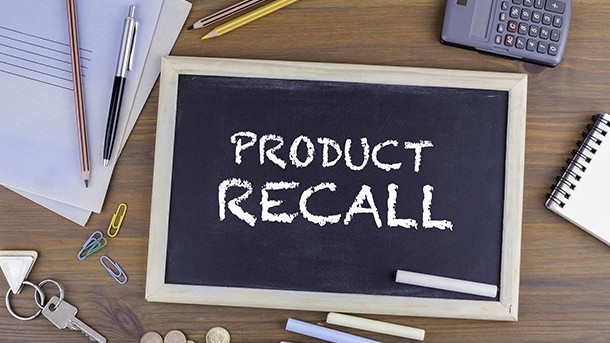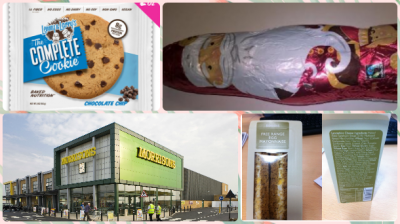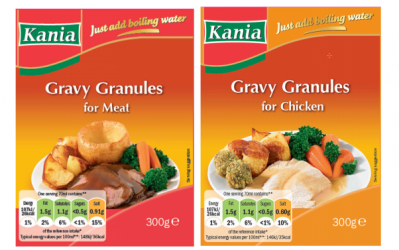Food safety recalls: planning prevents crises

Food labelling problems – and especially undeclared allergens – have crept up to top the list of usual suspects behind product recall incidents.
The implementation of mandatory nutrition declarations on packaged food in December only adds to the plethora of labelling requirements faced by food manufacturers, introducing even more scope for companies to get it wrong.
Garry Moseley, director of food and drink practice at insurer Arthur J Gallagher, says: “Consumers are heavily reliant on what they read, and there is a very clear risk from incorrect labelling on food packaging, especially for consumers with allergies to specific ingredients. The volume of information required means there is obvious scope for errors.”
According to Moseley, undeclared allergens present the biggest mislabelling risk to consumers and to food manufacturers alike: “An undeclared allergen, due to incorrect labelling, incorrect packaging or contamination of the product by an allergen, can cause major problems for food manufacturers.
“This mislabelling can lead to the potential for claims under both product recall and public liability insurance policies – the former designed to cover all the expenses associated with physically removing a mislabelled product from the market, which can run into thousands or even millions of pounds.
“The latter would protect against claims from third parties for bodily injury resulting from the consumption of that product.”
Undeclared allergens (Back to top)
“The majority of recalls coming out of the Food Standards Agency every day of the week are where someone’s either not properly documented a compound ingredient that may contain an allergen or the allergen has simply been missed in the generation of the label,” confirms Neil Griffiths, retail services director (UK) for risk management and compliance specialist SGS Ashby.
“You’d think by this stage we’d have all the IT systems in place to be able to get this right.” Yet in reality, he says problems are most often picked up when somebody simply looks at the label and spots a problem.
On the face of it, it seems obvious that established products should not suffer from these problems, since their ingredients lists should be tried and tested.
However, Griffiths says that established brands still fall foul of allergen and other mislabelling problems as recipes and/or ingredient suppliers change over time: “From the consumer point of view, the product may look the same but the raw materials can vary. They may have to be sourced from different suppliers at different times of the year, for example.”
Dominic Watkins, a partner with law firm DWF, agrees that the mislabelling of allergens is the most common trigger for recalls.
However, while it’s mandatory under the General Food Law to protect consumers in the case of unsafe products, he notes that some manufacturers may choose to go further by withdrawing products with faulty labels that are simply misleading, rather than dangerous.
Whether it’s a recall that involves recovering products from consumers or a withdrawal that means removing products from sale, the important thing is to have a solid plan in place, both for prevention and to respond appropriately if something goes wrong, he adds.
“Parliament and the courts have long recognised that, despite taking all reasonable precautions and exercising all due diligence, things can still go wrong. For example, where a fully trained member of staff does something that they are not permitted or a supplier erroneously provides the wrong ingredient,” says Watkins.
“In those circumstances, provided that the company has systems in place that should have prevented the issue from occurring, it will have a legal defence.
“In circumstances where there are fraudsters who are deliberately deceiving, it is very difficult to defeat,” he adds.
“After all, the whole point of fraud is to frustrate the systems in place. If the company had requested beef, been given an invoice for beef and the product supplied was labelled beef but in fact turned out to be a cheaper meat, then provided that the company did not have a reason to act then it is likely to have a defence: what more could it have done?”
Crisis management (Back to top)
Training is an important component of due diligence. Vince Shiers is md with crisis management and training firm RQA Group. He advocates testing systems by running role-playing exercises in addition to providing more conventional training.
“We can take lot codes from a client, call their consumer care line and say there’s a problem,” says Shiers.
“We play the roles of the environmental health officer, media, retailer and social media to put the company under pressure. It’s the best way to learn and test the company’s systems, apart from going through a real recall crisis.”
So, prevention and crisis planning are crucial, but what are the essential elements that a good crisis plan should set in motion if something goes wrong?
“Risk-assess the problem and use a chart to decide how to react and who to involve,” says Griffiths. “This initial appraisal is very important, because you may decide to take different actions as a result.”
Charts might aim to categorise an alert into a category such as red, amber or green, for instance, based on the likelihood of it affecting people and how serious any resulting health and safety impact might be.
Next, assemble your team. “Decide which people to involve. This may include outside companies such as media specialists.
“And don’t forget HR, because your internal communications are also very important. If you need to inform the local authority, do so, and make sure your contacts list is kept up to date,” says Griffiths.
It’s vital to show the regulator that you’re prepared to handle the crisis, says Shiers. “You should talk to your local environmental health officer if you think there might be a safety issue.
“But the way to do that is to say ‘this is what’s happened and this is what we plan to do’, then the authority will see that you understand the risks and are taking the appropriate action. Otherwise the authority won’t have confidence in you.”
Certification bodies might also need to be kept in the loop, according to David Wolf, European certification manager at Cert ID: “Not informing a certification body, due to a question of relevance of the certification in question, can be short-sighted and an unnecessary elevation of risk to non-compliance of certification terms.
“For example, if a product recall is due to undeclared allergens, a FMCG [fast-moving consumer goods] company may decide not to inform the body that certifies its IP [identity preserved] claim – such as a non-genetically modified claim – due to assumed non-relevance.
“However, the efficacy of segregation procedures may be questioned, potentially effecting the certified IP claim.”
Harder-to-define costs (Back to top)
However careful the planning, a product recall can be expensive in the short term, as well as incurring harder-to-define costs in terms of lost sales and reputational damage.
Luke Baker, product director for liability, construction and engineering at insurance company RSA, says: “Recall can trigger quite large claims quite quickly. If you have a turnover of £10M or £20M, it could have a big impact on your business.”
In the case of RSA, for example, this means the company does not currently target smaller businesses with its product recall insurance, because the market among them is unlikely to be able to support the necessary premiums required to fund potentially large claims. That said, RSA tries to tailor solutions that meet clients’ needs on a case-by-case basis.
And where insurers are including smaller firms in their target market, they are likely to be expecting clients to take on more of the risk in return for more affordable cover.
Insurance companies are old hands at assessing risk, and the risks associated with product recall are no exception. In fact, their expertise may even be a useful tool in helping food firms spot any chinks in their own armour.
“We have our own internal processes and we do liability surveys to identify the risk,” says Delphine Peyron, risk engineering consultant, with Global Consulting at RSA.
“We provide risk improvement plans when we identify an issue. In contamination, for example, we have a process to identify the size of the risk based on things like the size of batches and whether the company’s quality control processes are in line with the sector.”
“One of the first considerations is what food or beverage items they are involved with,” adds Baker.
“Clearly, some subsets lend themselves to higher risk, such as raw meat or raw fruit and veg. So the starting point is the product itself and we categorise clients into As (low risk), Bs and Cs (high risk). “Then, it’s about getting under the skin of the clients themselves.”
Parameters such as the number of locations and territories, as well as compliance with certifications such as the British Retail Consortium Global Standard or the ISO 22000 food safety standard, can all play a role in the equation when assessing the overall risk.
The bottom line is, whether you’re attempting to mitigate the potential costs of a product recall or trying to negotiate a good deal for insurance, the best advice is to be like the Boy Scouts and ‘be prepared’.















